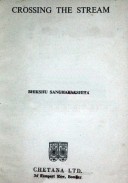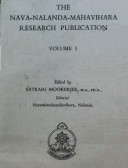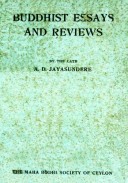Tìm Sách
Sách tiếng Anh-English >> The Basics Of Marxist-Leninist Theory Progress
Thông tin tra cứu
- Tên sách : The Basics Of Marxist-Leninist Theory Progress
- Tác giả : G. N. Volkov
- Dịch giả :
- Ngôn ngữ : Anh
- Số trang : 341
- Nhà xuất bản : Progress Publishers Moscow
- Năm xuất bản : 1979
- Phân loại : Sách tiếng Anh-English
- MCB : 12010000005795
- OPAC :
- Tóm tắt :
The Basics Of Marxist-Leninist Theory Progress
GUIDES TO THE SOCIAL SCIENCES
Translate from the Russian
General Editor professor G. N. Volkov, Dr. Se (Phil.)
Author: Pro. G. N. Volkov; G. G. Vodolazov; F. F. Petrenko; Docen V. V. Poshatayev
and G. N. Picrogov, Cand
Progress Publishers Moscow
CONTENTS
INTRODUCTION
PART ONE
MARX AND ENGELS-THE FOUNDERS OF THE SCIENTIFIC WORLD OUTLOOK OF THE PROLETARIAT
I. MARX AND ENGEL: THE ROUTE TO MATERIALISM AND COMMUNISM
Historical preconditions Leading to the Formation of the Views of Marx and Engels
The Development of Marx’s Personality and View of the World
The Formation of the Personality and World View of Frederick Engels
II. THE MANIFESTO OF THE COMMUNIST PARTY – THE FIRST POLICY DOCUMENT OF MARXISM
The Beginning of Collaboration Between Marx and Engels. The Organisation of the Communist League
The Great Ideas of the Manifesto
The World Historic Significance of the Manifesto
Marx and Engels in the Revolution of 1848-1849
III. A REVOLUTION IN THE VIEWS OF THE DEVELOPMENT OF SOCIETY
Marxism and Its Component Parts
The Discovery of a Materialist Concept of History
Socio- Economic Formation
Types of Socio-Economic Formation
IV. CAPITAL – THE MOST PEACEFUL MISSILE HURLED AT THE HEAD OF THE BOURGEOISME
Life in England. The Study by Marx of Economic
Problems and His Work on Capital
The Secret of Capitalist Exploitation and the Way of Removing it
V. THE DEVELOPMENT OF SOCIALISM FROM UTOPIA TO SCIENCE
The Precursors of Scientific Socialism
Scientific Socialism
VI. AT THE HEAD OF THE INTERNATIONAL PROLETARIAN MOVEMENT
Founders and Leaders of the first International
The Lessons of the Paris Commune
The Further Development of Marxist Theory
The Prognosis of Revolution in Russia
PART TWO
LENIN – THE HEIR TO THE TEACHING AND CAUSE OF MARX AND ENGELS AND THE LEADER OF THE SOCIALIST REVOLUTION
VII. THE FORMATION AND DEVELOPMENT OF THE REVOLUTIONARY VIEWS OF LENIN
The Centre of the World Revolutionary Process Moves to Russia
The First Steps of a Young Marxist
The Ideological Struggle of the 1890s. The Defence and Development of Marxism
VIII. FOUDING A NEW KIND OF PARTY – THE PARTY OF SCIENTIFIC COMMUNISM
Lenin’s Plan for Founding the Party
The Basic Characteristics of the New Party
The Party in the First Russian Revolution
The Struggle to Defend the Purity of the Proletarian
World outlook
IX. IMPERIALISM IS THE EVE OF THE SOCIALIST REVOLUTION
On the Brink of the First World War
The Highest and Last Stage of Capitalism
The Basic Tanets of the Theory of Socialist. Revolution
Following from Lenin’s Analysis of Imperialism
X. V.I. LENIN ON THE PROLETARIAN REVOLUTION AND THE STATE
The blue Notebook
The Main Questio of the Revolution
The Proletarian State
XI. THE GREAT OCTOBER SOCIALIST REVOLUTION – A TURNING POINT IN WORLD HISTORY
V. I. Lenin – Leader of the Revolution
The Victory of the October Revolution as a Manifestation of the Laws of History
The Party and the Struggle to Found the Soviet State
The Economic Programme of the Revolution
The Revolution and the Strategy of Peaceful Coexistence
The World-Historic Significance of the October Revolution.
XII. LENIN’S PLAN FOR BUILDING SOCIALISM IN THE USSR
The New Economic Policy
The Unity of the Party as an Essential Condition of Socialist Construction
GOELRO – the Programme for Building the Material
Basis of Socialism
The Last Works of Lenin on the Main Tasks of Socialist
Construction
The Great Achievement of the Soviet People
PART THREE
THE LENINIST POLICY OF THE CPSU FOR BUILDING COMMUNISM
XIII. LENIN’S IDEAS REALISED IN THE BUILDING OF DEVELOPED SOCIALISM IN THE USSR
Devoloped Socialism as a Natural Stage on the Path to Communism
The Essence of Developed Socialism
XIV. CREATING THE MATERIAL AND TECHNICAL BASE OF COMMUNISM – THE MAIN ECONOMIC OBJECTIVE OF THE PARTY AND THE PEOPLE
The Material and Technical Base of Communism and Its Specific Features
The Factors Involved in Economic Growth
Improving the Quality of Production and Running the Economy Rationally and Efficiently
Husbanding Natural Resources
Efficient Management
The Communist Style of Work
XV. TOWARDS A CLASSES SOCIETY , A SOCIETY OF COMPLETE SOCIAL HOMOGENEITY.
The Social Structure of Devoloped Socialism
Ways of Arriving at the Classes Society
XVI. SOCIALISM AND NATIONHOOD
The Characteristics of Socialist Nationhood
The Soviet People as a Historically new Community
A Single Economic Complex
The Interaction and Mutual Enrichment of National Cultures
Internationalism – the Lodestar of the Socialist Nations
XVII. THE DEVELOPMENT OF SOCIALIST DEMOCRACY AND THE CONSOLIDATION OF THE SOCIALIST STATE THE CPSU AS THE LEADING AND GUIDING FORCE IN SOVIET SOCIETY
Socialist Democracy
The Political System of Socialist Society
The Constitution of Development Socialism
The Socialist State of the Whole People
The Soviets of People’s Deputies
Public Organisations
People’s Control
The CPSU – Leader of the Soviet People
XVIII. THE EDUCATION OF THE NEW MAN AND THE ALL-ROUND DEVELOPMENT OF THE INDIVIDUAL
The Individual Under Developed Socialism
Ways and Means of Educating the Fully Developed individual
PART FOUR
THE VICTORY OF MARXISM-LENINISM ON THE INTERNATIONAL SCENE
XIX. THE CONTENT OF THE PRESENT HISTORICAL PERIOD
Lenin and the Communist Parties on the Present Epoch
The Great October Revolution and the World Revolutionary Process
The Present Stage in the Post-October Period
The General Crisis of Capitalism
The Main Revolutionary Forces in Contemporary Society
XX. THE DEVELOPMENT OF THE WORLD SYSTEM OF SOCIALISM
The Formation of the World System of Socialism and the General Law of Socialist Transformation
The Socialist Community
The Development of Co-operation Among the Socialist Countries
Joint Action on the International Arena
The Militant Alliance of the Communist Parties as the Basis for Close Co-operation Among the Socialist Countries
The Socialism World and the Liberation Movement
XXI. THE NATIONAL LIBERATION MOVEMENT
The Development of the National Liberation Movement
The Struggle for Economic Independence
The Socialist- Orientated Path
Co- operation Between the Developing Countries and the Countries of the Socialist Community
XXII. THE CLASS STRUGGLE IN THE CAPITALIST COUNTRIES
The Working-Class Movement Today
The Strike Movement
The Consolidation of the Forces of the Left
The Move Towards Working Class unity
The Strategy of the Anti-Monopoly Struggle
XXIII. THE INTERNATIONAL COMMUNIST MOVEMENT – THE MOST INFLUENTIAL POLITICAL FORCE IN THE MODERN WORLD
The Growing Role of he Communist Movement
The Significance of co-operation and Solidarity Among Communist Parties
XXIV. THE LENINIST PEACE POLICY
The Main Principles and Features of Soviet Foreign Policy
Peaceful Coexistence and the Class Struggle
The Foreign Policy Programme
Soviet Policy on a Just and Peaceful Settlement of International Conflict and in Support of the National Liberation Movement
Détente
The Struggle for Disarmament
LOOKING TO THE FUTURE
INTRODUCTION
Ideas become a material force if they take possession of the masses. This tenet of Marxism-Leninsim is fully applicable to the deas of Marxism-Leninism iself. This revolutonary teaching, created by Karl Marx and Frederick Engels and developed under new conditions, in the age of imperialism and proletarian revolutions, by the genius of Vladimir Ilyich Lenin, has taken possession of the minds and hearts of millions of workers throughout the world to become a mighty force transforming the globe, the banner of the increasing powerful world communist movement.
In the countries of the world Socialist community , Marxism-Leninism informs the creative activity of the masses, who are building a society whose motto is: “Everything for man, everything in the name of man”.
In the capitalist countries, Marxism-Leninism is the weapon of the working class and of all working people in their struggle against the dominion of the bourgeoisie, against the exploitation of man by man and social inequality.
For the peoples of the developing countries, the theory of Marxism-Leninism serves as a reliable guide in their efforts to remove the remnants of colonialism, poverty and backwardness, to resist the policy of fiat used by the monopolies of powerful capitalist states and to carry through progressive social changes.
 Facebook
Facebook
 Google
Google
 Google+
Google+


















